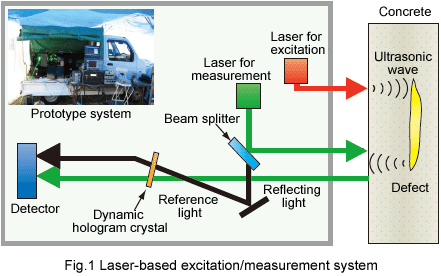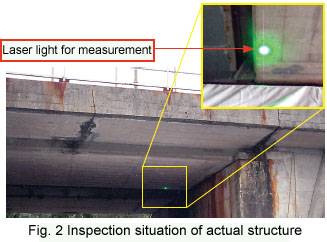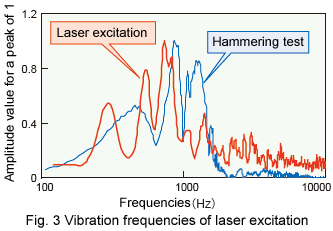Hammering is the main technique used in the inspection of concrete members that have suffered age-related deterioration, but this is a significant burden for inspection engineers. The hammering method is also subjective and depends on the capability of individual engineers, meaning that the current situation with regard to the quantitative evaluation of defects is difficult. Accordingly, the RTRI developed a system to perform remote/ contactless flaw detection of defects in concrete members by exciting concrete surfaces with a laser and measuring the resulting vibration on the concrete surface using phase differences between the reflected light and the reference light of the laser for measurement (Fig. 1). Since a high-power laser is used, concrete members can be efficiently inspected without the need for a conventional reflecting plate. In order to quantitatively evaluate defects in concrete members with this technique, the RTRI developed algorithms for detecting issues such as internal cavities and float up to a few centimeters in depth from the concrete surface. This was done by collecting a variety of vibration waveforms made by hammer blows to actual concrete members with different degrees of integrity and analyzing the outcome.
As a result, the RTRI was able to perform verification tests (Fig. 2) of the algorithms with respect to concrete members in actual structures using a laser-based excitation/measurement system, and confirmed that defects in concrete members can be detected with good accuracy from substantial agreement with the vibration frequencies obtained in the hammering tests (Fig. 3).
In the future, the RTRI will introduce the automation of inspection location records and speedier inspections, as well as achieving increased efficiency for integrity-degree diagnosis of concrete members in tunnels and viaducts.
|





